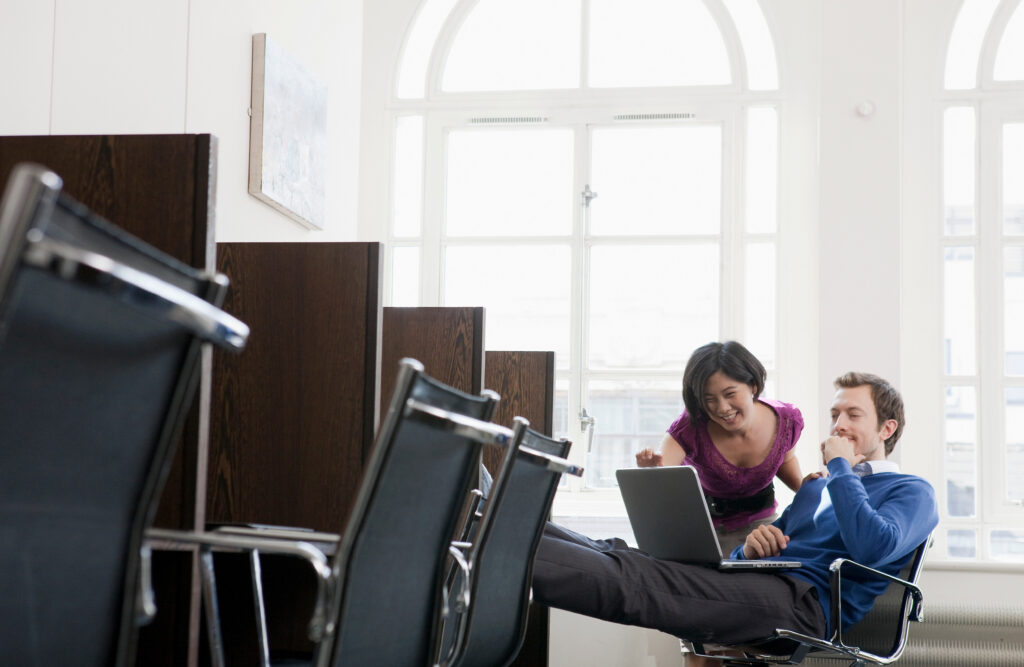It’s often said that we’re products of our environment and that our output is only as good as the input, essentially, this means that our surroundings affect us more than we realize. This also translates to our working environment or office setups. Well-designed office setups can positively impact employee satisfaction, productivity, and even contribute to employee retention.

Traditional workstations did not allow for personalization. The old viewpoint was that, without personal items at a desk, employees would be able to focus purely on work due to the lack of distractions. With COVID forcing work-from-home setups, the traditional views have started to become antiquated.
Allowing employees to personalize their workstations within reasonable limits gives them a sense of connection to their workspace. After all that time spent working from home due to COVID, allowing a bit of that casual feeling from home into the workplace may help the transition back to the office go a little smoother. In addition, allowing employees to personalize their workstation gives them a better connection with their environment.
This connection is called place identity by psychologists, it directly links the attitudes of people to their environment. In one of Harvard’s studies, they found that if employees feel their workspace aligns with their self-image and enhances their sense of belonging, they respond more positively to the environment.
In their study, people who resonated with an open space were more proud to be there and were given a greater sense of connection which made their perception of the space more collaborative and comfortable. Those who did not resonate with the space found it distracting and hectic.
Allowing the personalization of workstations may help all types of people. Those who resonate with the space can put personal items such as family pictures which help make the space truly their space.
In the event that someone doesn’t resonate with the space, allowing them to customize it in a way that makes them comfortable still gives them more of that ownership. This ownership directly impacts the employee’s engagement level and even boosts productivity.

Ergonomics is the science involving the design and arrangement of things people use with the goal of being efficient and safe. When something is described as ergonomic, people generally mean that it’s designed for comfort and efficiency.
You may have seen advertisements for ergonomic keyboards, mice, chairs, etc, all of which are aimed at making work more comfortable. These items are usually shaped differently when compared to conventional tools as they’re designed to fit the natural shape of the general population.
For example, ergonomic keyboards are designed to follow the natural curvature of your hand as opposed to the now standard layout of a keyboard that forces your arms closer than normal and makes your fingers curl.
In a Workplace Wellness Trend Report done by Fellowes, it was found that 87% of workers would like their employer to offer healthier workspaces and that 93% of tech industry workers would stay longer in a company that offered healthier workplace benefits. These surveys suggest that having a more health-focused workspace would increase retention in the office.
While the price of ergonomic office items is much higher than standard equipment, the cost of attrition is much higher. The Gallup consultancy group estimates attrition costs to range from 50% to 200% of the employee’s annual salary. This number jumps even higher for C-suite level positions.
While referring back to the place identity theory, it isn’t guaranteed that having ergonomic office setups will make everyone happy, the general consensus is that it does, in fact, improve retention rates. There isn’t much to lose by improving the working conditions of your employees, after all, people spend more than a third of their lives at a desk.

Proper arrangement isn’t some Feng Shui thing where different colors need to be next to certain things, it’s about putting the right people next to each other in order to make collaboration easier.
Teams that collaborate frequently should be seated close to each other, as this would reduce the amount of time it takes for one person to communicate with someone else. Putting web developers near designers will allow for seamless communication when working on joint projects.
Properly arranging departments also allows you to keep distractions away from other people. For example, a team that does calls, such as sales, should be put far from teams that tend to get loud, such as marketing or customer service.
In terms of productivity, you can get teams to collaborate effortlessly. It’s more of a quality-of-life move linked with efficiency, not directly intended to promote retention.
Circling back to place identity, the feeling of control and belonging directly impacts employee engagement levels. Disengaged employees have a higher tendency to quit their job and force their previous employers to fill the position again. In contrast, highly engaged employees exhibit more effort when doing their job, resulting in higher levels of productivity and higher retention levels.
In a study by Steelcase, it was observed that employees who are happy with their workplace setting displayed higher levels of engagement. The same study also discovered that about a third of workers don’t fall into the engaged or disengaged camp, and they exist in the gray area in the middle.
Improving the workplace can help push this undecided portion of employees to join the other engaged employees in the office. Making positive changes in the office, based on previously mentioned topics, is a start to getting this group to become more engaged.
Investing in your employees may require some capital but it will keep them happy and working. The alternative is replacing them and that costs leagues more than it would to retain them. Making the effort to improve the office setup of your employees also goes a long way. It shows that management is paying attention and cares about staff.
Aside from providing paid training, the seemingly small gesture of investing in your employees by improving their working conditions. By allowing employees the small freedom of personalizing their workspace, you allow them to control some of their settings, making them more engaged compared to working at a generic workstation.